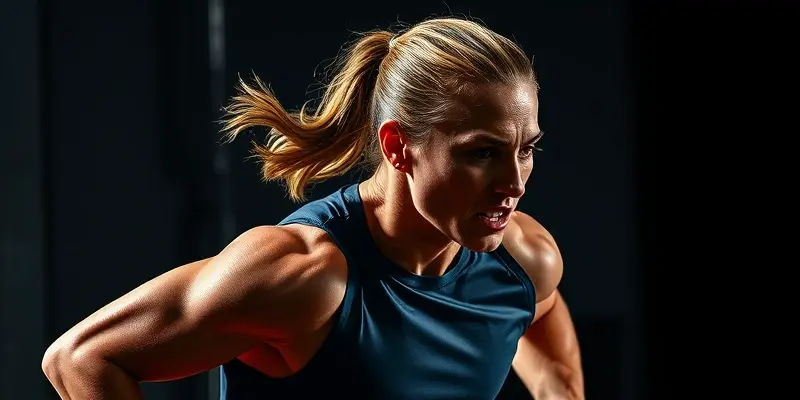How 3D Printed Sports Equipment is Transforming Injury Prevention and Recovery
In today’s fast-paced fitness world, injuries can sideline even the most dedicated athletes. For anyone passionate about staying active, preventing injuries and bouncing back quickly is key to achieving your goals—whether you’re a weekend warrior or a seasoned competitor. Enter 3D printing: an innovation that’s reshaping how we approach both injury prevention and recovery in sports.
3D Printing in Sports: A Game Changer
You may have heard buzz about 3D printing, but what does it really mean for athletic gear? Simply put, 3D printing creates physical objects layer by layer from a digital blueprint. Over the past few years, this technology has moved from prototyping to everyday sports equipment, making it possible to produce custom gear that fits you—and only you.
As a fitness professional with a decade of experience helping athletes recover and thrive, I’ve seen firsthand how personalized solutions can make the difference between long-term injury and a safe, triumphant comeback.
Customization & Injury Prevention
Standard “one-size-fits-all” sports equipment doesn’t quite cut it anymore. Our bodies are unique, so why shouldn’t our gear be?
- Tailored Fit Means Targeted Protection:
3D printed insoles, helmets, and braces are crafted based on your actual anatomy. For example, a runner with flat feet might get custom insoles that evenly distribute impact, which can help fend off plantar fasciitis or shin splints. - Reduced Risk of Common Injuries:
Studies show that proper, personalized support can lower your risk for overuse injuries. If you’ve ever felt pain from ill-fitting shoes or gear, imagine the difference a glove-like fit makes for high-impact sports like soccer or cycling. - Practical Example:
Take cyclists who use 3D-printed shin guards. Not only do they ride in comfort, but they also benefit from padding that shields exactly where they need it most.
Faster Recovery & Rehabilitation
When injury does strike, recovery can feel like a waiting game. Here’s where 3D printing steps in as a true game changer:
- Rapid Production, Personalized Healing:
Traditional braces and casts can take days—or weeks—to fit and fabricate. With 3D scanning, a new brace can be designed, printed, and fitted in a single appointment. - Comfort Drives Compliance:
Lightweight, breathable 3D-printed casts make it easier for you to keep moving safely and prevent muscle loss. Wearing a bulky, itchy cast? Those days are numbered! - Real-Life Use:
Imagine an athlete who breaks their wrist: traditional casting means stiff, heavy plaster. With a 3D-printed, custom-fit cast, they’re back to gentle practice drills days sooner—all while supporting natural healing and following an effective injury recovery checklist.
Real-World Examples & Use Cases
Let’s put it all together with a quick breakdown of common injury needs and how 3D printed equipment is making an impact:
| Injury/Need | 3D Printed Equipment Example | Benefit ||——————-|————————————|——————————————|| Ankle sprain | Custom ankle brace | Enhanced stability and tailored support || Stress fracture | Lightweight, ventilated cast | Comfort, hygiene, faster rehabilitation || Concussion risk | Personalized helmets, padding | Superior fit for maximum protection || Foot pain | 3D-printed insoles or shoes | Improved alignment, less strain || Major limb injury | Adaptive prosthetics, orthotics | Swift, precise fit for better mobility |
Story Time:
Michelle, a recreational basketball player, suffered a moderate ankle sprain last season. Her physical therapist suggested a 3D-printed ankle brace. The result? She was back on the court two weeks ahead of schedule and felt more stable than ever.
Bonus: Smart Wearables and Biofeedback
3D printing is now being used to create custom-fit wearables with embedded sensors. These devices track healing and movement patterns, helping athletes and doctors make smarter return-to-play decisions.
Sustainability & Continuous Innovation
Today’s athletes are looking for eco-friendly choices—3D printing helps here too. Many companies use recyclable or biodegradable materials, reducing waste compared to traditional equipment.
Plus, designers can quickly test and refine gear, staying ahead of the latest injury risks and athletic needs. This sprint toward constant improvement benefits the entire fitness community.
Conclusion & Takeaways
3D printing is more than a trend—it’s a revolution in sports injury prevention and recovery. From rapid, personalized rehabilitation tools to sustainable, cutting-edge gear, the advantages are real and growing. If you’re aiming to stay healthy, strong, and in the game, considering custom 3D-printed equipment might be your best next move.
Have you tried 3D-printed sports gear or have a story to share? Drop a comment below—I’d love to hear your experience! Let’s keep learning, sharing, and moving forward, together.

